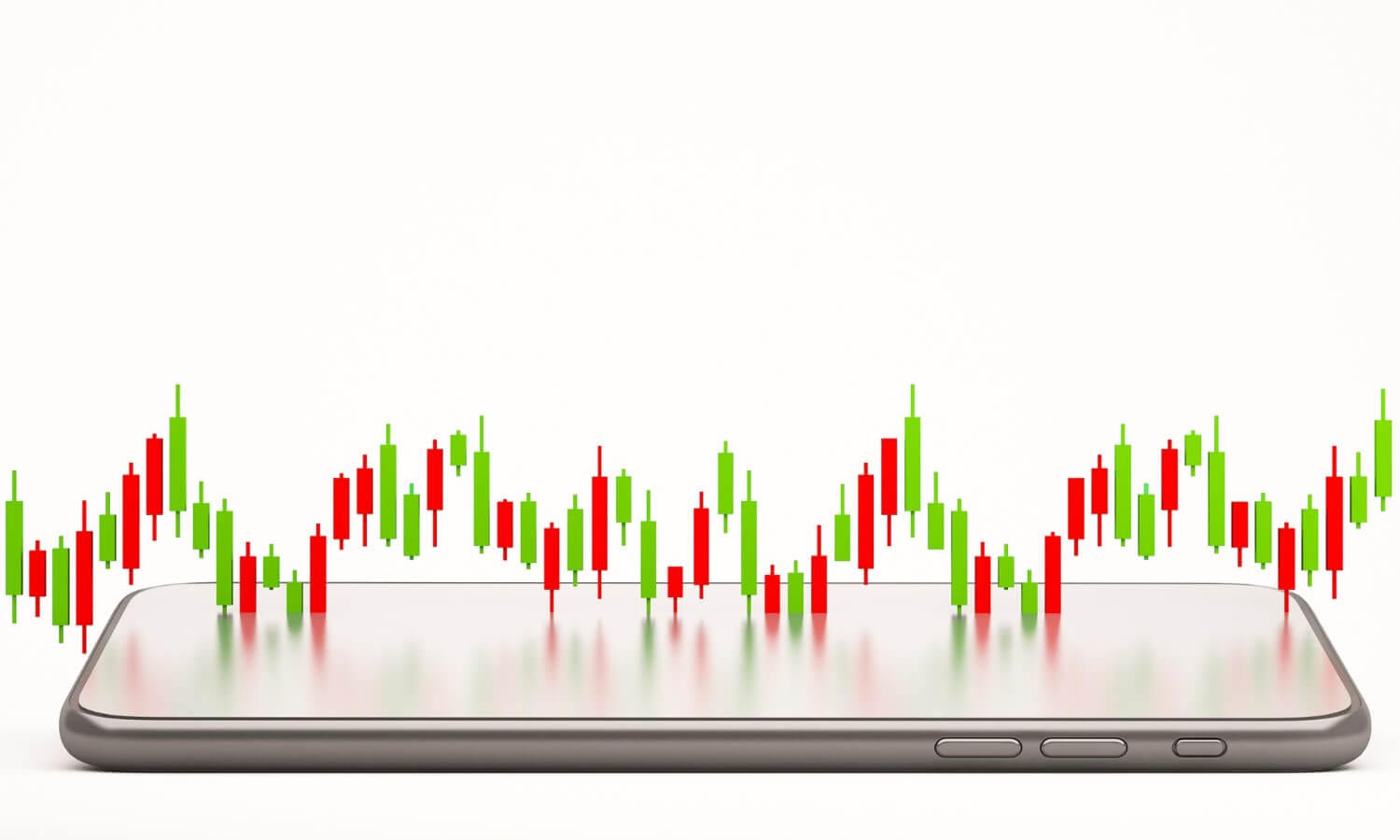Trading in the foreign exchange (Forex) market offers substantial opportunities for profit, but success in this highly liquid and dynamic market heavily relies on timing. The Forex market operates 24 hours a day, five days a week, making it crucial for traders to understand the significance of market hours and locations. In this comprehensive guide, we will delve into the various aspects of when to trade Forex. We will explore the importance of market hours and locations, highlighting how these factors can influence trading decisions and outcomes.
1.Understanding the Forex Market

The Forex market, also known as the foreign exchange market or FX market, is the largest and most liquid financial market globally, where currencies are traded. To successfully navigate the Forex market and determine when to trade, it’s crucial to comprehend its fundamental aspects.
What is Forex?
Explanation of the Forex market: The Forex market is a decentralized global market for the trading of currencies. It functions as a network of participants, including banks, financial institutions, corporations, governments, and individual retail traders, who engage in buying and selling different currencies. Unlike traditional stock markets, the Forex market operates 24 hours a day, five days a week, due to its international nature.
Key Players: Understanding the key participants in the Forex market is essential. These include:
- Banks: Major banks, such as central banks, commercial banks, and investment banks, play a significant role in currency trading. Central banks, like the Federal Reserve (US) or the European Central Bank (ECB), influence exchange rates through monetary policy decisions.
- Institutions: Large financial institutions, like hedge funds and pension funds, often engage in currency trading to diversify their portfolios.
- Corporations: Multinational corporations engage in Forex to manage currency exposure arising from international operations and trade.
- Retail Traders: Individual traders participate in the Forex market through online brokers. Retail traders can access the market with relatively small capital compared to institutional players.
Understanding the diversity of participants and their motivations is crucial for traders to anticipate market movements.
Currency Pairs

Explanation of currency pairs: In the Forex market, currencies are traded in pairs. Each pair consists of two currencies: a base currency and a quote currency. The base currency is the first currency in the pair, and the quote currency is the second. The exchange rate reflects how much of the quote currency is needed to purchase one unit of the base currency. For example, in the EUR/USD pair, the Euro (EUR) is the base currency, and the US Dollar (USD) is the quote currency.
Examples of major, minor, and exotic currency pairs: There are three categories of currency pairs:
- Major Pairs: These involve the world’s most traded currencies, such as EUR/USD, GBP/USD, and USD/JPY. Major pairs typically have high liquidity and lower spreads.
- Minor Pairs: Also known as cross-currency pairs, these do not include the US Dollar but involve other major currencies, like EUR/GBP or AUD/JPY.
- Exotic Pairs: Exotic currency pairs involve one major currency and one currency from a smaller or less frequently traded economy. Examples include USD/SGD or EUR/TRY. Exotic pairs tend to have wider spreads and lower liquidity compared to majors.
Understanding currency pairs is fundamental for traders as it forms the basis for executing trades and evaluating market movements. The choice of currency pairs depends on individual trading strategies and risk tolerance.
In essence, understanding the Forex market involves grasping its decentralized structure, the role of various market participants, and the mechanics of currency pairs. This knowledge lays the foundation for making informed decisions about when to trade Forex and which currency pairs to trade. Additionally, understanding market dynamics and trends is essential, which will be explored in further detail in subsequent sections of the guide.
2.The 24-Hour Forex Market
![]()
The Forex market is unique in that it operates 24 hours a day, five days a week. This continuous trading cycle is divided into distinct trading sessions, each associated with specific geographical locations. Understanding these trading sessions is essential for traders as they directly impact market activity and liquidity.
Forex Trading Sessions
Introduction to the four major trading sessions: The Forex market is divided into four primary trading sessions, each named after a major financial center:
- Sydney Session: This session begins the Forex trading day and is often considered the least volatile. It starts at 10:00 PM GMT and ends at 7:00 AM GMT.
- Tokyo Session: The Tokyo session is the second in line and is known for the Yen’s active trading. It overlaps with the Sydney session and runs from 12:00 AM GMT to 9:00 AM GMT.
- London Session: The London session is the most active and liquid session, accounting for a significant portion of daily Forex trading volume. It overlaps with both the Tokyo and New York sessions, running from 8:00 AM GMT to 5:00 PM GMT.
- New York Session: Following the London session, the New York session also experiences high trading activity. It overlaps with the London session and runs from 1:00 PM GMT to 10:00 PM GMT.
- Explanation of session overlaps: The most critical periods for trading are the overlaps between sessions. For instance, the overlap between the London and New York sessions (from 1:00 PM to 5:00 PM GMT) is known for its heightened trading activity and volatility.
Market Hours and Liquidity

Discussion of how market hours affect liquidity: Liquidity refers to the ease with which one can buy or sell an asset without causing significant price fluctuations. Liquidity varies throughout the trading day, and it is typically highest during session overlaps. During these periods, multiple financial centers are active simultaneously, leading to increased trading volume and liquidity.
Identification of the most liquid times to trade Forex: The most liquid times occur during session overlaps. For example, the overlap between the London and New York sessions offers the highest liquidity for major currency pairs like EUR/USD and GBP/USD. Traders often prefer these times as they can enter and exit positions with minimal slippage.
Explanation of the pros and cons of trading during various sessions: Each trading session has its advantages and drawbacks. The Sydney and Tokyo sessions may offer quieter, less volatile trading, which can be beneficial for certain strategies. In contrast, the London and New York sessions provide higher volatility and more significant price movements, but they can also carry higher risks.
Understanding the 24-hour nature of the Forex market and the characteristics of each trading session helps traders choose the most suitable times to execute their strategies. Traders need to align their trading styles and preferences with the market’s dynamics during specific hours to optimize their trading experience and potential for profit.
3.Strategies for Timing Your Trades

i. Scalping and Day Trading
Scalping:
Scalping is a short-term trading strategy where traders aim to profit from small price movements within very short timeframes, often seconds to minutes.
Scalpers make numerous trades throughout the day, looking for opportunities to profit from minimal price fluctuations.
Key aspects of scalping include:
- Quick Decision-Making: Scalpers need to make rapid decisions and execute trades swiftly.
- Tight Stop-Loss and Take-Profit Orders: To manage risk, scalpers typically use tight stop-loss orders to limit potential losses and take-profit orders to secure small gains.
- High-Frequency Trading: Scalpers may execute a large number of trades daily, making it essential to have a robust trading strategy and risk management plan.
Day Trading:
Day trading involves opening and closing positions within the same trading day, without holding positions overnight.
Day traders seek to profit from intraday price movements and capitalize on short-term trends.
Key aspects of day trading include:
- Technical Analysis: Day traders often rely on technical analysis, studying price charts, patterns, and indicators to make trading decisions.
- Managing Risk: Effective risk management, including setting stop-loss and take-profit orders, is crucial for day traders.
- Market Research: Staying informed about market news and economic events that could affect intraday price movements is essential.
ii. Swing Trading

Swing Trading:
Swing trading is a medium-term trading strategy where traders aim to capture price swings or trends that typically last several days to weeks.
Swing traders look for opportunities to enter positions at points of potential trend reversals or continuation.
Key aspects of swing trading include:
- Technical and Fundamental Analysis: Swing traders may use a combination of technical analysis and fundamental analysis to identify potential trade setups.
- Patience: Swing traders need to exercise patience and discipline, as they often hold positions for more extended periods compared to scalpers or day traders.
- Risk Management: Like other traders, swing traders employ risk management techniques to protect their capital.
iii. Position Trading
Position Trading:
Position trading is a long-term trading strategy where traders aim to profit from major, long-lasting trends that can persist for months or even years.
Position traders base their decisions on fundamental analysis, considering economic factors, geopolitical events, and central bank policies.
Key aspects of position trading include:
- Fundamental Analysis: Position traders focus heavily on fundamental analysis to assess the broader economic and geopolitical landscape.
- Long-Term Perspective: Position traders have a longer investment horizon and are less concerned with short-term price fluctuations.
- Diversification: Position traders may build diversified portfolios of currency pairs, commodities, or other assets to spread risk.
iv. Risk Management

Risk Management:
Risk management is a critical aspect of successful Forex trading, regardless of the chosen trading style.
Effective risk management strategies help traders protect their capital and minimize losses.
Key components of risk management include:
- Setting Stop-Loss and Take-Profit Orders: Traders use stop-loss orders to limit potential losses and take-profit orders to secure profits at predefined levels.
- Position Sizing: Determining the size of each trade relative to the total trading capital is crucial to control risk. Traders often risk a small percentage of their capital on each trade.
- Diversification: Spreading investments across different currency pairs or asset classes can help reduce exposure to any single trade or market event.
- Risk-Reward Ratio: Traders evaluate the potential reward relative to the risk in each trade. A favorable risk-reward ratio helps ensure that potential gains outweigh potential losses.
Successful Forex trading involves choosing a trading style that aligns with your risk tolerance, time commitment, and expertise. Additionally, regardless of the chosen strategy, robust risk management is essential to protect your trading capital and achieve long-term success in the Forex market.
4.Major Forex Trading Locations

In the world of Forex trading, geographical locations play a significant role in influencing market behavior. Different trading sessions are associated with specific financial hubs, each with its own characteristics and impact on the market.
The London Session
Description of the London session as the most active and influential Forex trading session: The London session, often referred to as the “European session,” is one of the most crucial trading sessions in the Forex market. It opens at 8:00 AM GMT and closes at 5:00 PM GMT. During this session, the London financial markets are at their peak activity, and many large financial institutions and banks are actively trading.
Analysis of key economic data releases during this session: The London session is known for its significance due to several key economic events and data releases. These may include announcements related to the UK economy, the Eurozone, and other European countries. Traders pay close attention to events like interest rate decisions, GDP reports, and employment data releases during this session.
The New York Session

Explanation of the New York session’s role as a significant overlap with the London session: The New York session is the second most active Forex trading session and typically overlaps with the latter part of the London session. It runs from 1:00 PM GMT to 10:00 PM GMT. The New York session is important because it encompasses the opening of the US markets, which are among the largest and most influential in the world.
Discussion of major currency pairs traded during this session: Currency pairs involving the US Dollar (USD), such as EUR/USD, USD/JPY, and GBP/USD, experience significant trading activity during the New York session. Traders closely watch these pairs for potential trading opportunities.
The Asian Sessions (Sydney and Tokyo)
Overview of the Sydney and Tokyo sessions, focusing on their specific characteristics: The Asian sessions are known for being relatively less volatile compared to the London and New York sessions.
Sydney Session: The Sydney session starts the Forex trading week, opening at 10:00 PM GMT. It is often considered a relatively quiet session with lower trading volumes. However, it sets the tone for the week’s trading.
Tokyo Session: The Tokyo session follows the Sydney session, beginning at 12:00 AM GMT. It is known for active trading of the Japanese Yen (JPY) and may experience increased volatility during significant economic events in Asia.
How Asian sessions set the tone for the trading day: While the Asian sessions may be less volatile, they can influence market sentiment for the day. Movements in the Asian sessions can impact currency pairs when the London and New York sessions open, especially if there are significant developments or news releases.
5.Time Zones and Local Hours
Traders need to be aware of time zones and the local trading hours of the Forex hubs. Here’s why this knowledge is essential:
Adjusting Trading Hours to Your Time Zone: Forex traders should align their trading activities with the trading sessions that match their local time zones. This ensures that traders are active when the market they are interested in is open and most liquid.
Maintaining a Consistent Trading Schedule: Consistency is key in Forex trading. Having a regular trading schedule helps traders develop discipline and a better understanding of the market’s nuances during specific sessions.
Weather and Seasonal Factors

Weather and seasonal factors can have an impact on Forex trading in several ways:
Impact of Seasons on Trading Volumes: Seasonal variations, such as holidays and weather-related events, can affect trading volumes. For example, during the summer months in the Northern Hemisphere, trading volumes in some markets may decrease as traders take vacations.
Weather-Related Events: Extreme weather events, such as hurricanes or typhoons, can disrupt financial markets, including Forex. These events can lead to increased volatility or even temporary market closures.
Holiday Periods: Major holidays in different regions can lead to reduced trading activity and liquidity in the Forex market. Traders should be aware of holiday schedules to adjust their trading strategies accordingly.
Understanding the impact of geographical locations, time zones, and seasonal factors on Forex trading helps traders make informed decisions about when to trade and when to exercise caution. It allows traders to optimize their trading strategies based on market conditions influenced by these factors.
6.Economic Calendar and News Releases
In the Forex market, staying informed about economic events and their timing is crucial. Economic data releases and events can significantly impact currency movements. Traders use an economic calendar to track these events and make informed trading decisions.
Economic Calendar

Explanation of the economic calendar and its role in Forex trading: An economic calendar is a tool that provides a schedule of upcoming economic events, announcements, and data releases. It includes events like central bank interest rate decisions, GDP (Gross Domestic Product) reports, employment data, inflation figures, and more.
How to interpret and use the calendar for trading decisions: Traders use the economic calendar to plan their trading strategies around scheduled events. This includes:
Event Descriptions: Understanding what each event represents and its potential impact on the market.
Event Timing: Knowing when the event is scheduled to occur, including the date and time.
Consensus and Actual Figures: Monitoring market expectations (consensus forecasts) and the actual released figures to gauge the market’s reaction.
Key Economic Indicators
Discussion of major economic indicators that can significantly impact currency values: Several economic indicators are closely watched by Forex traders due to their potential to move the market. These indicators include:
Interest Rates: Central banks’ decisions on interest rates can impact a currency’s attractiveness to investors.
GDP (Gross Domestic Product): GDP reports provide insights into a country’s economic health and growth prospects.
Employment Data: Figures like non-farm payrolls in the U.S. can influence currency values.
Inflation (CPI and PPI): Inflation data affects a currency’s purchasing power.
Consumer Confidence and Sentiment: These indicators reflect consumer attitudes and can signal economic trends.
The timing and frequency of these releases: Economic indicators are typically released at specific intervals, often monthly or quarterly. Traders should be aware of these release schedules to plan their trades accordingly.
Trading the News

Strategies for trading around economic news releases: Trading the news involves taking positions based on the market’s reaction to economic events. Strategies for trading the news include:
Straddle and Strangle Strategies: These involve placing buy and sell orders simultaneously, with tight stop-loss levels to catch rapid price movements.
Fade the News: Some traders choose to go against the initial market reaction, anticipating a reversal.
Breakout Trading: Traders may enter positions if a currency pair breaks key technical levels in response to news.
The risks and rewards of news trading: While trading the news can be profitable, it also carries risks. Market volatility during news releases can lead to slippage (a difference between the expected and executed price) and increased spreads. Traders must be aware of these risks and have a solid risk management plan in place.
Effectively utilizing the economic calendar and understanding key economic indicators are essential skills for Forex traders. Being aware of the timing of major news releases allows traders to adjust their positions or stay out of the market during potentially volatile periods. News trading strategies, when applied cautiously, can offer opportunities for profit, but traders should be prepared for the inherent risks and be ready to adapt to rapidly changing market conditions.
Impact of Geographic Events
Discussion of how geopolitical events and economic news from specific locations can influence Forex market movements: Geopolitical events, economic news, and developments in particular regions can have a substantial impact on currency values.
Real-world examples of events impacting currency values: Examples might include Brexit affecting the British Pound (GBP), trade tensions affecting the Chinese Yuan (CNY), or economic crises affecting emerging market currencies. Understanding the influence of such events is vital for traders.
Understanding the significance of major Forex trading locations allows traders to make informed decisions about when to participate in the market. Traders need to be aware of session overlaps and the specific characteristics of each session to take advantage of trading opportunities and manage risks effectively. Additionally, staying informed about geopolitical and economic developments in various regions helps traders anticipate potential market-moving events.
7.Factors Affecting Trading Decisions

When deciding when to trade in the Forex market, various factors come into play, influencing a trader’s choice of timing, currency pairs, and overall strategy. Understanding these factors is crucial for making informed and successful trading decisions.
Risk Tolerance and Trading Style
How individual risk tolerance and trading style dictate the choice of trading hours: Your risk tolerance and trading style are intimately connected with the timing of your trades:
Risk Tolerance: Traders with a higher risk tolerance may be more comfortable participating in the market during volatile periods, while those with a lower risk tolerance may prefer less volatile times.
Trading Style: Different trading styles, such as day trading, swing trading, and position trading, require different timeframes and timing.
Risk management strategies for different trading times: Traders should align their risk management strategies with their risk tolerance and chosen trading style. For instance, day traders often use tight stop-loss orders to limit losses, while position traders may have wider stop-loss levels.
Currency Pair Choice

The impact of currency pair characteristics on trading hours: The choice of currency pairs should align with your trading hours and strategy:
Liquidity: Major currency pairs like EUR/USD and USD/JPY are highly liquid and suitable for traders during most sessions. Exotic currency pairs may have lower liquidity and higher spreads.
Volatility: Some currency pairs are naturally more volatile than others. Traders should select pairs that match their risk tolerance and strategy.
Examples of pairs better suited for specific trading sessions: For example, the EUR/USD pair is often most active during the overlap of the London and New York sessions, while AUD/JPY may see increased activity during the Asian sessions.
Volatility and ATR
![]()
Understanding market volatility and its relationship with trading hours: Volatility refers to the degree of price fluctuations in the market. It can vary significantly throughout the trading day. Factors that contribute to volatility include news releases, economic events, and market sentiment.
Using Average True Range (ATR) to assess market conditions: ATR is a technical indicator that helps traders gauge the current level of market volatility. It provides a numerical value representing the average range between the high and low prices over a specified period. Traders can use ATR to determine the appropriate placement of stop-loss and take-profit levels based on current market conditions.
Understanding and applying these factors to trading decisions is essential for success in the Forex market. Traders should carefully assess their risk tolerance, choose currency pairs that align with their trading style and hours, and adapt their strategies to the current market conditions. By doing so, they can optimize their trading experience and improve their chances of profitability.
Conclusion
In conclusion, mastering the art of timing your Forex trades is fundamental to achieving success in this dynamic and highly liquid market. By understanding market hours, staying informed about economic events, and employing effective trading strategies, traders can position themselves for profitable opportunities while managing risk. Forex trading requires dedication, discipline, and a commitment to continuous improvement, making it both a challenging and rewarding endeavor for those who engage in it.
Don’t trade all the time, trade forex only at the confirmed trade setups.
Get more confirmed trade setups here: forexgdp.com/buy/
